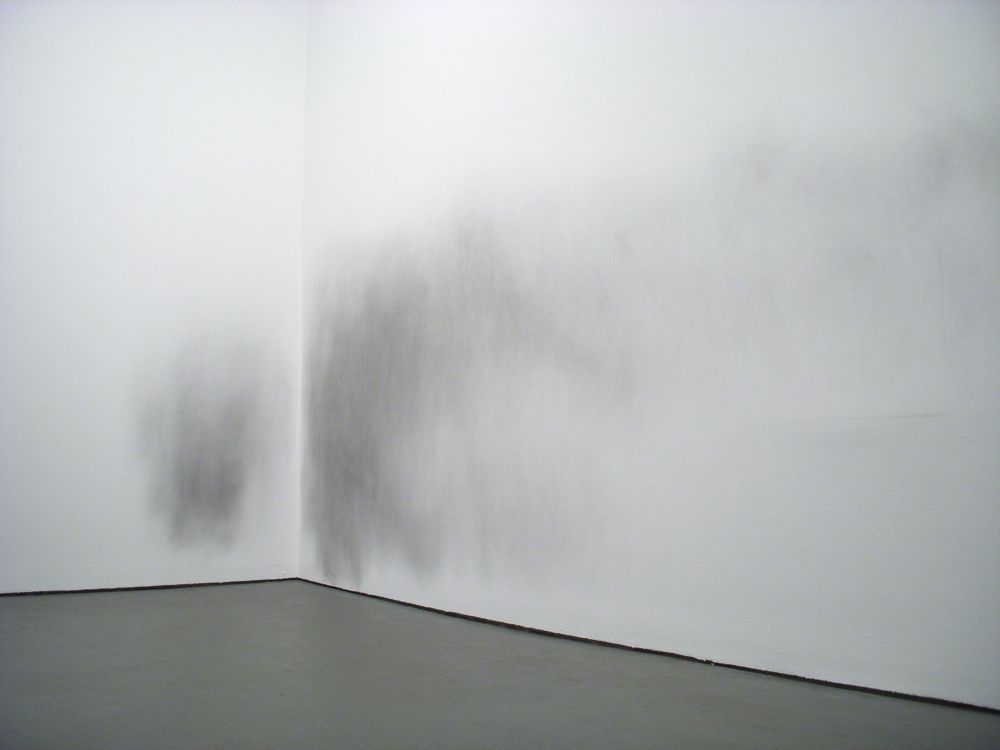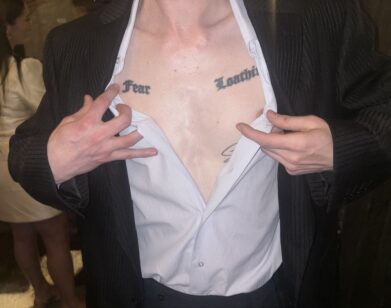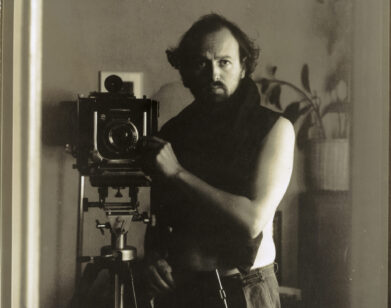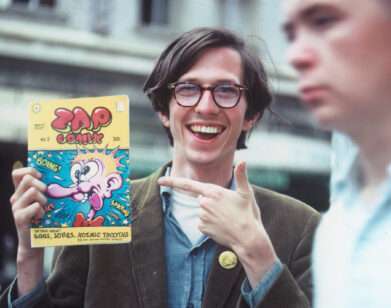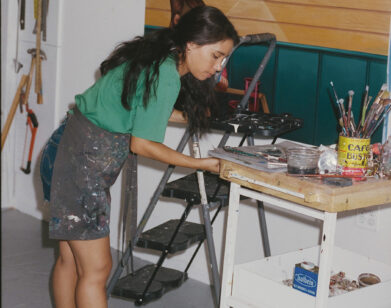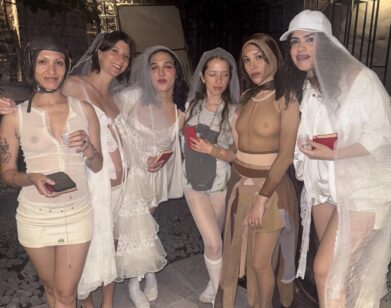Daniel Turner
Daniel Turner’s work speaks in severely luxurious tones. Even the idea of going from scattered group shows to his first big solo at London’s White Cube gallery this month points to the 29-year-old artist’s ability to harness grandeur. Drawing on the punk-heroic post-minimalism of Steven Parrino, Turner’s techniques walk a fine modernist line, generating the aura of a shaman using an absurdly stark economy of means.
At White Cube, Turner is presenting work from two ongoing series that evidence his interest in the rituals of work. One is a large-scale rubbing, which he created mostly by attacking and massaging a plaster wall with steel wool, removing layers of paint. He has made these inverted paintings for the past two years, ever since his brief stint as a guard at the New Museum in New York, where he would inadvertently lean against the pristine walls and leave marks on them with his body. The highly variable works (his boot makes a different mark than his sleeve, for instance) evoke the sublime social realism of J.M.W. Turner’s polluted skyscapes, or more recent material works like Lawrence Weiner’s removals of plaster from gallery walls. “I was searching, like many artists, for a cheap material to make a large gesture,” Turner explains. “I can fly around the world with a $1.50 bag of steel wool and make an entire exhibition with it.”
In London, Turner is also showing three of his over-the-top monochrome paintings, which consist of transparent vinyl sumptuously draped over wooden frames. The curvaceous, vaginal plastic folds encase void-like black smears. As ever, Turner’s rich material invokes his own experience with common labor: the roofing emulsion he used as a teenager working contracting jobs in Virginia.
Material transformation is important to Turner, and the steps he takes to effect his alchemy are deliberately crude. He has poured iodine in sinks and on floors, creating elegant stains. He folds silver wrapping paper into delicate but brutal hooks that he scatters on the floor like empty candy wrappers. The result is neither the monumentality of land art nor the eternal wellspring of a Felix Gonzalez-Torres- it’s a site-specific installation that reminds you you’re on sanctified private property. “After an exhibition closes, the work is generally painted over or swept out the door, and then you go on with your life,” he says. “So it’s just a temporary action, which I think is very much related to painting.”
TURNER WILL OPEN A SOLO SHOW AT THE JOURNAL GALLERY IN BROOKLYN ON OCTOBER 5TH.

